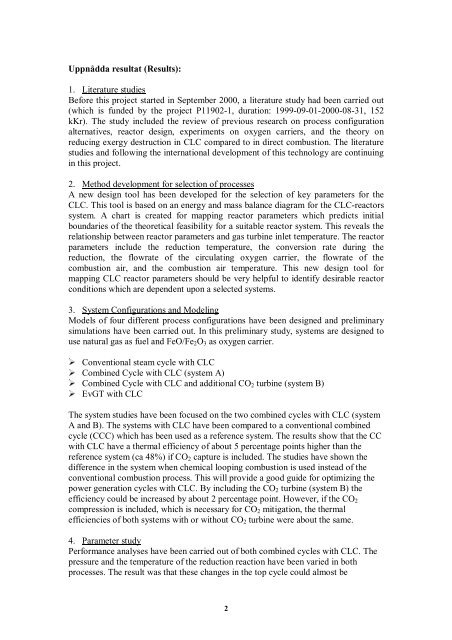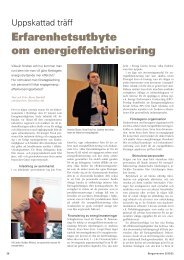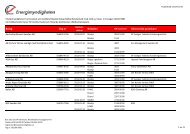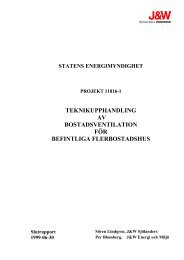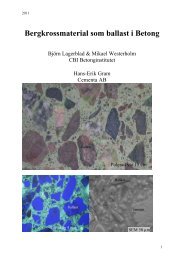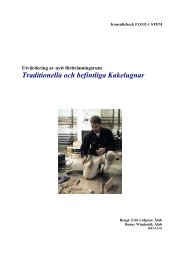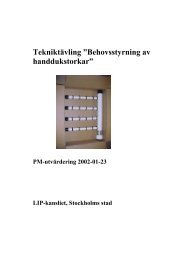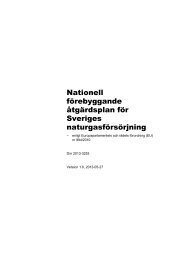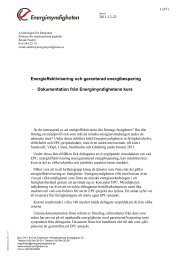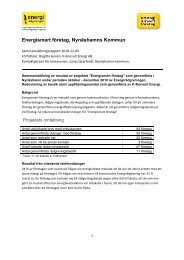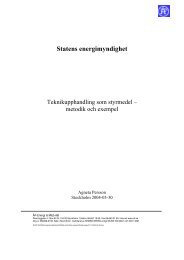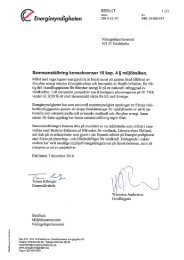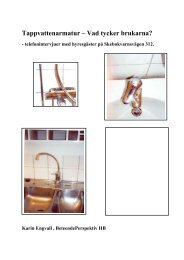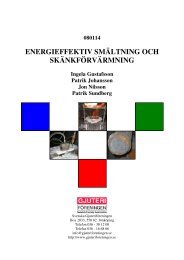ATAC i system - Energimyndigheten
ATAC i system - Energimyndigheten
ATAC i system - Energimyndigheten
You also want an ePaper? Increase the reach of your titles
YUMPU automatically turns print PDFs into web optimized ePapers that Google loves.
Uppnådda resultat (Results):<br />
1. Literature studies<br />
Before this project started in September 2000, a literature study had been carried out<br />
(which is funded by the project P11902-1, duration: 1999-09-01-2000-08-31, 152<br />
kKr). The study included the review of previous research on process configuration<br />
alternatives, reactor design, experiments on oxygen carriers, and the theory on<br />
reducing exergy destruction in CLC compared to in direct combustion. The literature<br />
studies and following the international development of this technology are continuing<br />
in this project.<br />
2. Method development for selection of processes<br />
A new design tool has been developed for the selection of key parameters for the<br />
CLC. This tool is based on an energy and mass balance diagram for the CLC-reactors<br />
<strong>system</strong>. A chart is created for mapping reactor parameters which predicts initial<br />
boundaries of the theoretical feasibility for a suitable reactor <strong>system</strong>. This reveals the<br />
relationship between reactor parameters and gas turbine inlet temperature. The reactor<br />
parameters include the reduction temperature, the conversion rate during the<br />
reduction, the flowrate of the circulating oxygen carrier, the flowrate of the<br />
combustion air, and the combustion air temperature. This new design tool for<br />
mapping CLC reactor parameters should be very helpful to identify desirable reactor<br />
conditions which are dependent upon a selected <strong>system</strong>s.<br />
3. System Configurations and Modeling<br />
Models of four different process configurations have been designed and preliminary<br />
simulations have been carried out. In this preliminary study, <strong>system</strong>s are designed to<br />
use natural gas as fuel and FeO/Fe2O3 as oxygen carrier.<br />
Conventional steam cycle with CLC<br />
<br />
Combined Cycle with CLC (<strong>system</strong> A)<br />
<br />
Combined Cycle with CLC and additional CO2 turbine (<strong>system</strong> B)<br />
<br />
EvGT with CLC<br />
The <strong>system</strong> studies have been focused on the two combined cycles with CLC (<strong>system</strong><br />
A and B). The <strong>system</strong>s with CLC have been compared to a conventional combined<br />
cycle (CCC) which has been used as a reference <strong>system</strong>. The results show that the CC<br />
with CLC have a thermal efficiency of about 5 percentage points higher than the<br />
reference <strong>system</strong> (ca 48%) if CO2 capture is included. The studies have shown the<br />
difference in the <strong>system</strong> when chemical looping combustion is used instead of the<br />
conventional combustion process. This will provide a good guide for optimizing the<br />
power generation cycles with CLC. By including the CO2 turbine (<strong>system</strong> B) the<br />
efficiency could be increased by about 2 percentage point. However, if the CO2<br />
compression is included, which is necessary for CO2 mitigation, the thermal<br />
efficiencies of both <strong>system</strong>s with or without CO2 turbine were about the same.<br />
4. Parameter study<br />
Performance analyses have been carried out of both combined cycles with CLC. The<br />
pressure and the temperature of the reduction reaction have been varied in both<br />
processes. The result was that these changes in the top cycle could almost be<br />
2


